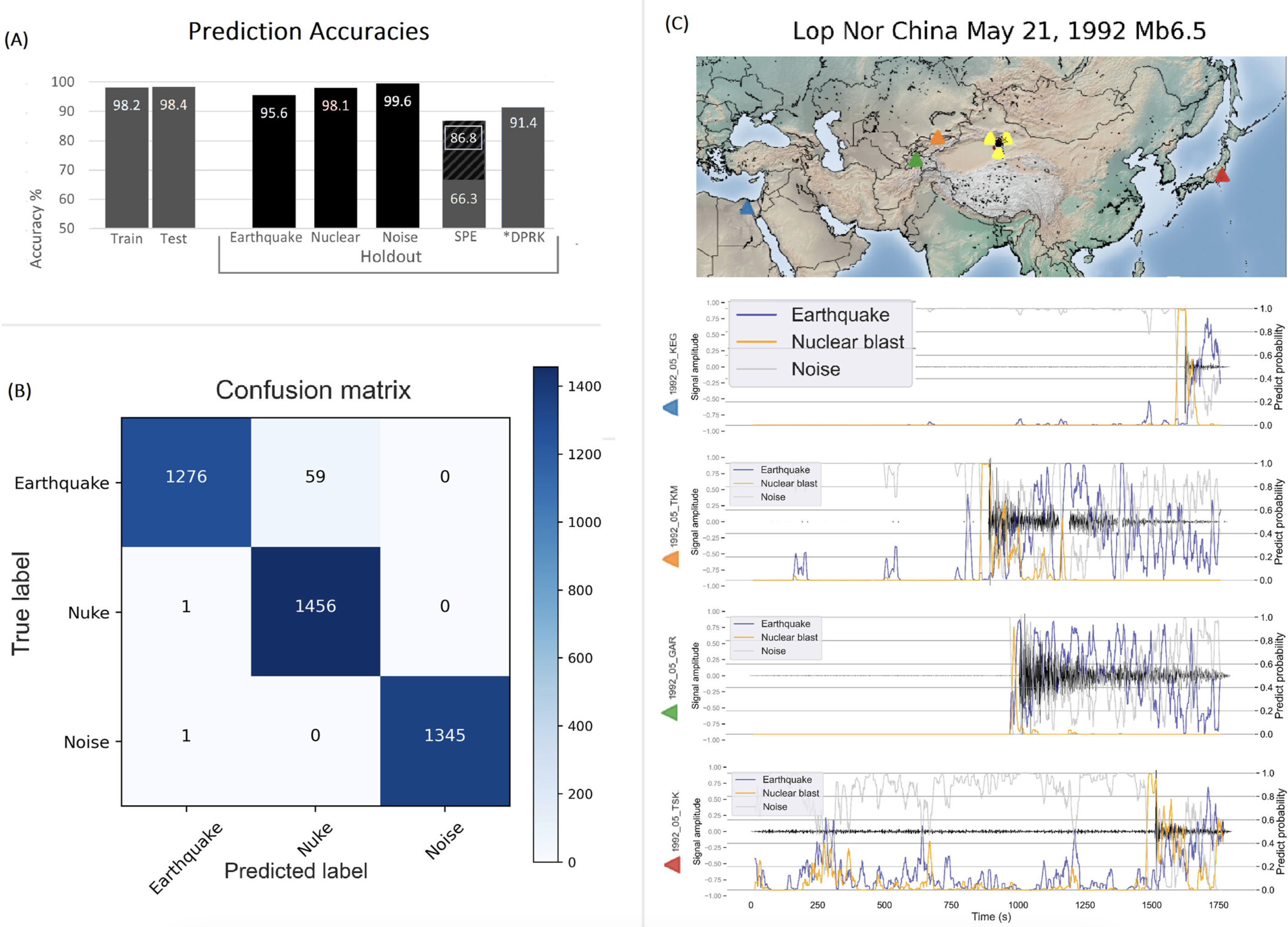Seafloor Geodesy in Alaska
My grad student, Nathalie Chavarría, and I are on-board the RV Sikuliaq at the moment deploying a bunch of transponders and a couple of autonomous surface ve...
We just published a paper, lead by recent graduate Louisa Barama, on a machine learning method to automatically and rapidly characterize seismic signals by source. We specifically try to differentiate background noise (what we experience most of the time), natural earthquake waves, and underground nuclear explosions. This study is particularly novel in that it does so with a global dataset including signals both near and far from sources, changing features dramatically along the way.
Using data not used in initial training, we found that we could automatically detect and characterize about 96% of earthquake signals and 98% of the nuclear signals from single seismic waves.
While not done here, such methods can be further strengthened by evaluating a suite of stations for the same periods to capture signals possible missed by some stations. Furthermore, though we classify only two types of impulse functions, the work strongly suggests we can apply such methods elsewhere for other seismic signals, including volcanic activity, landslides, and possibly slow-moving earthquakes.
Very exciting indeed!
 Overall prediction accuracies from our generalized global neural network.
Overall prediction accuracies from our generalized global neural network.
My grad student, Nathalie Chavarría, and I are on-board the RV Sikuliaq at the moment deploying a bunch of transponders and a couple of autonomous surface ve...
We just published a paper, lead by recent graduate Louisa Barama, on a machine learning method to automatically and rapidly characterize seismic signals by s...
Update: The Postdoc position is now open for applications. You can apply here, and please feel free to contact me to discuss the position.
We are nearing the end of a little boat-based field research to help understand how faults lock-up and generate some of the world’s largest earthquakes and t...
We are just now wrapping up GPS/GNSS Field work and some training along the Kivu Rift in Rwanda.
Congratulations Louisa Barama for successfully defending your PhD Thesis yesterday afternoon on “Advanced Methods for Real-Time Identification and Determinat...